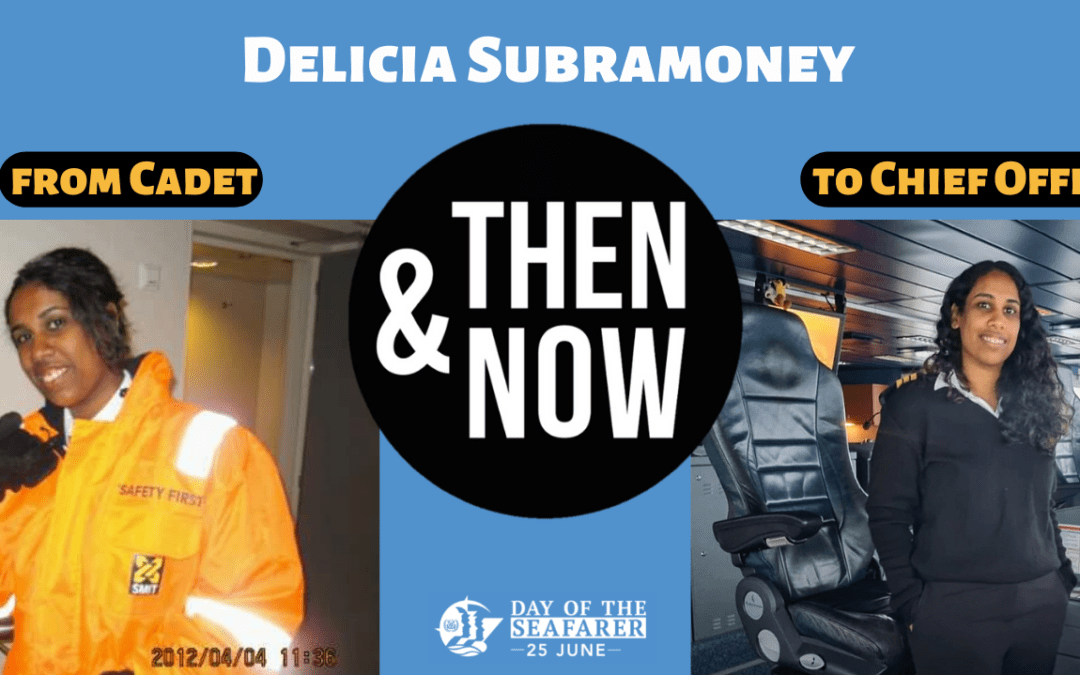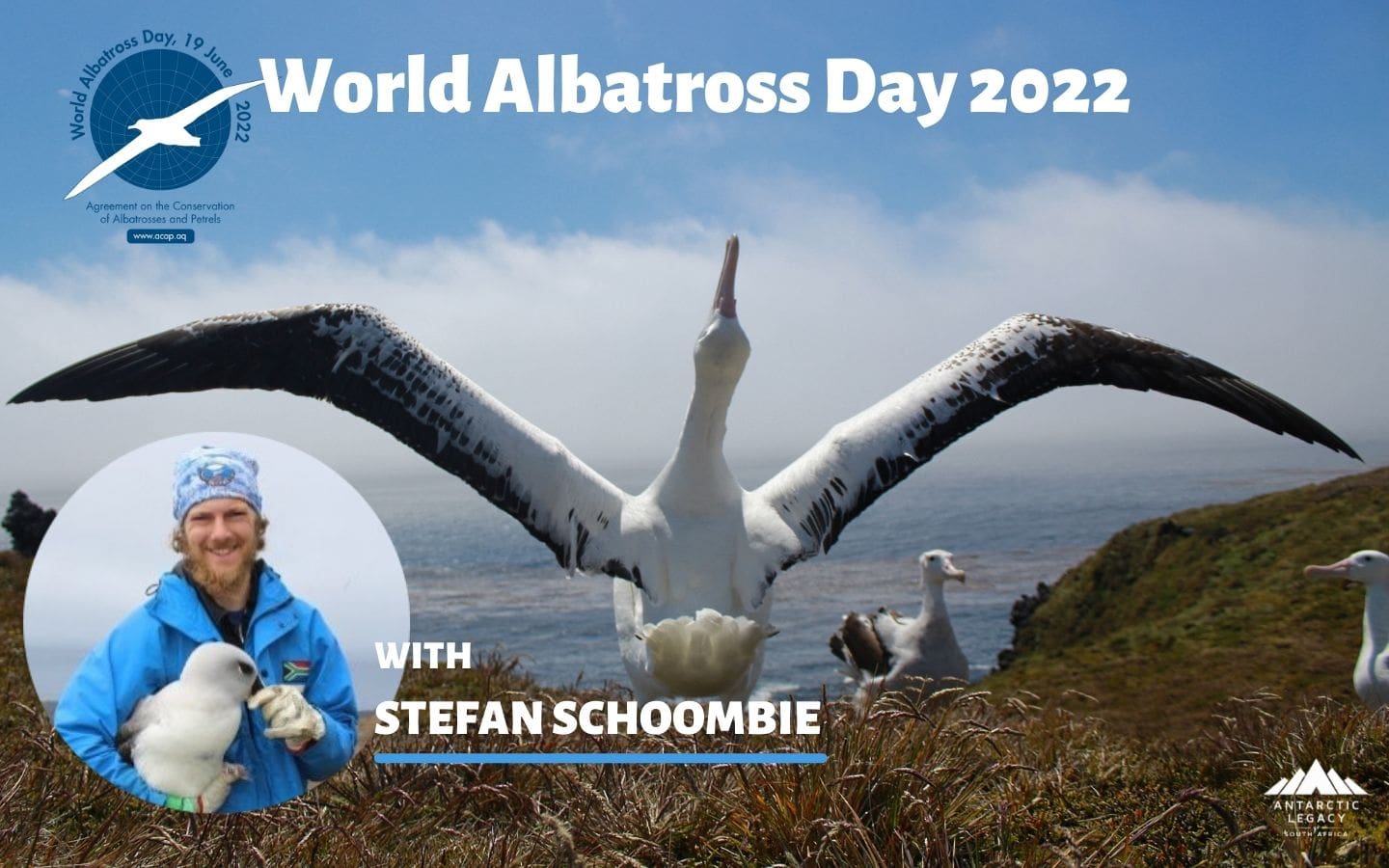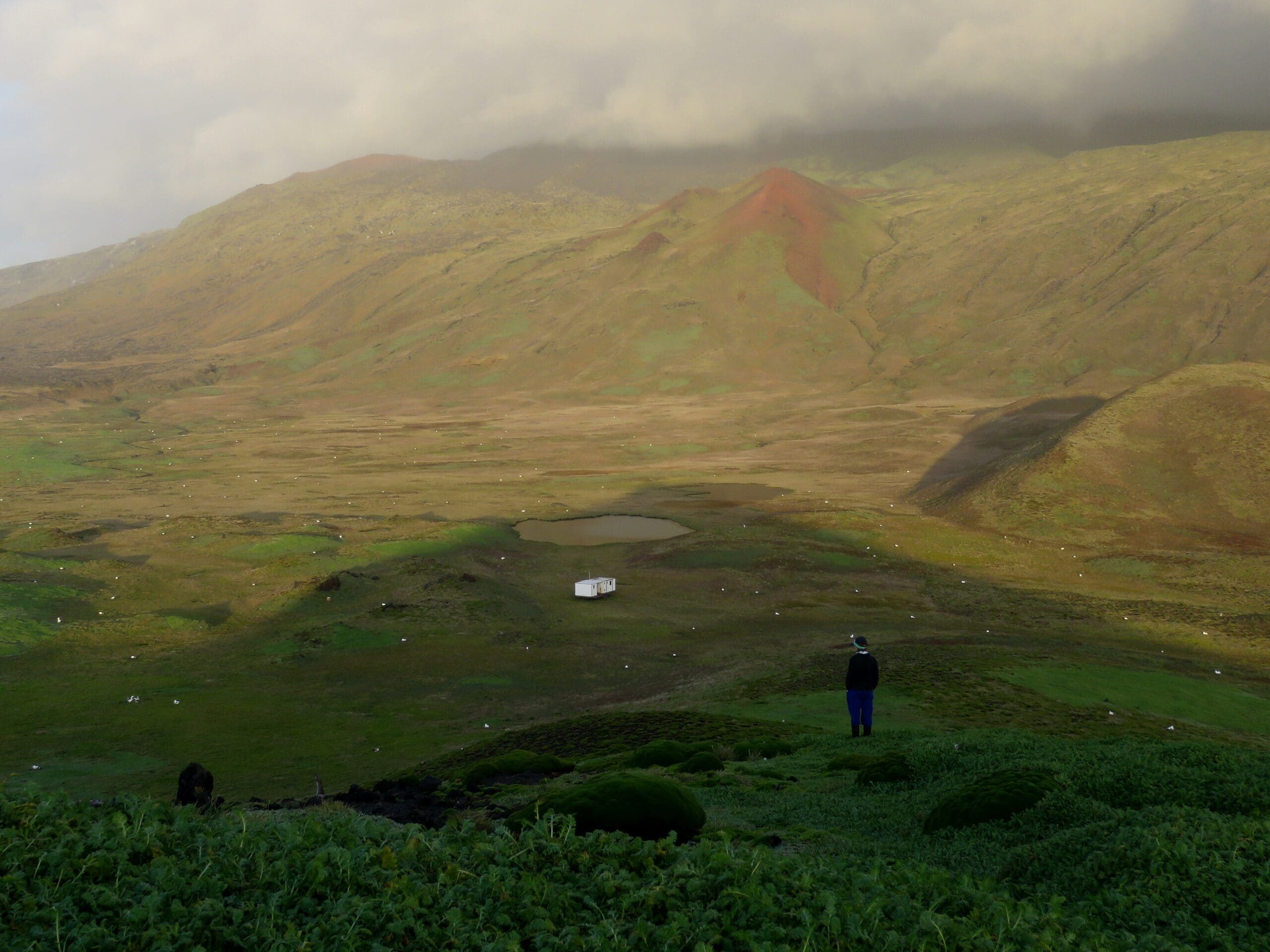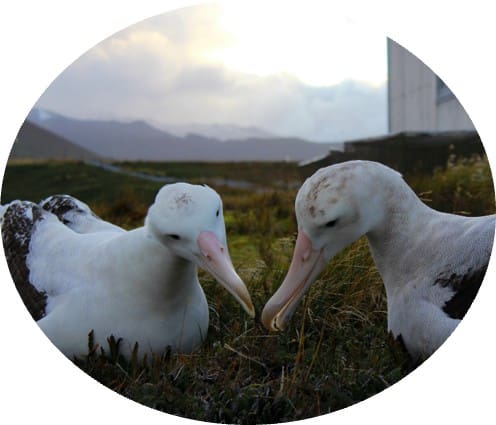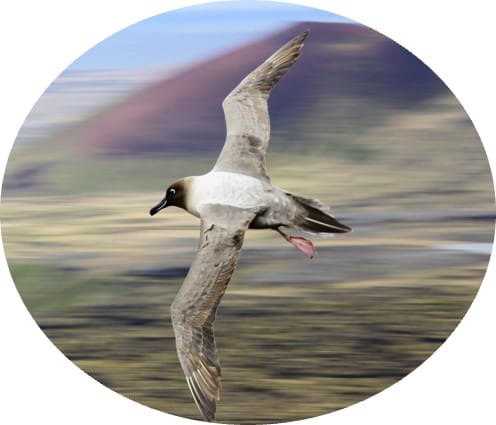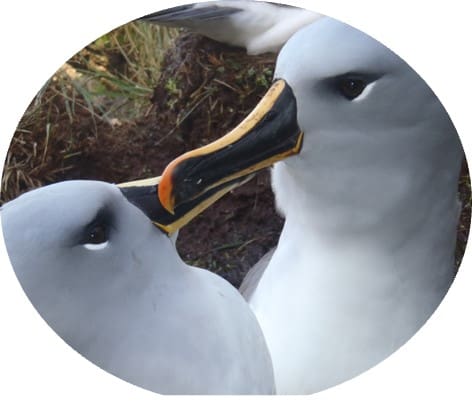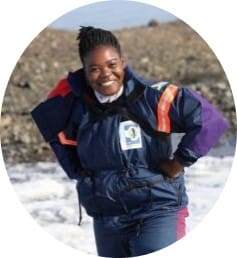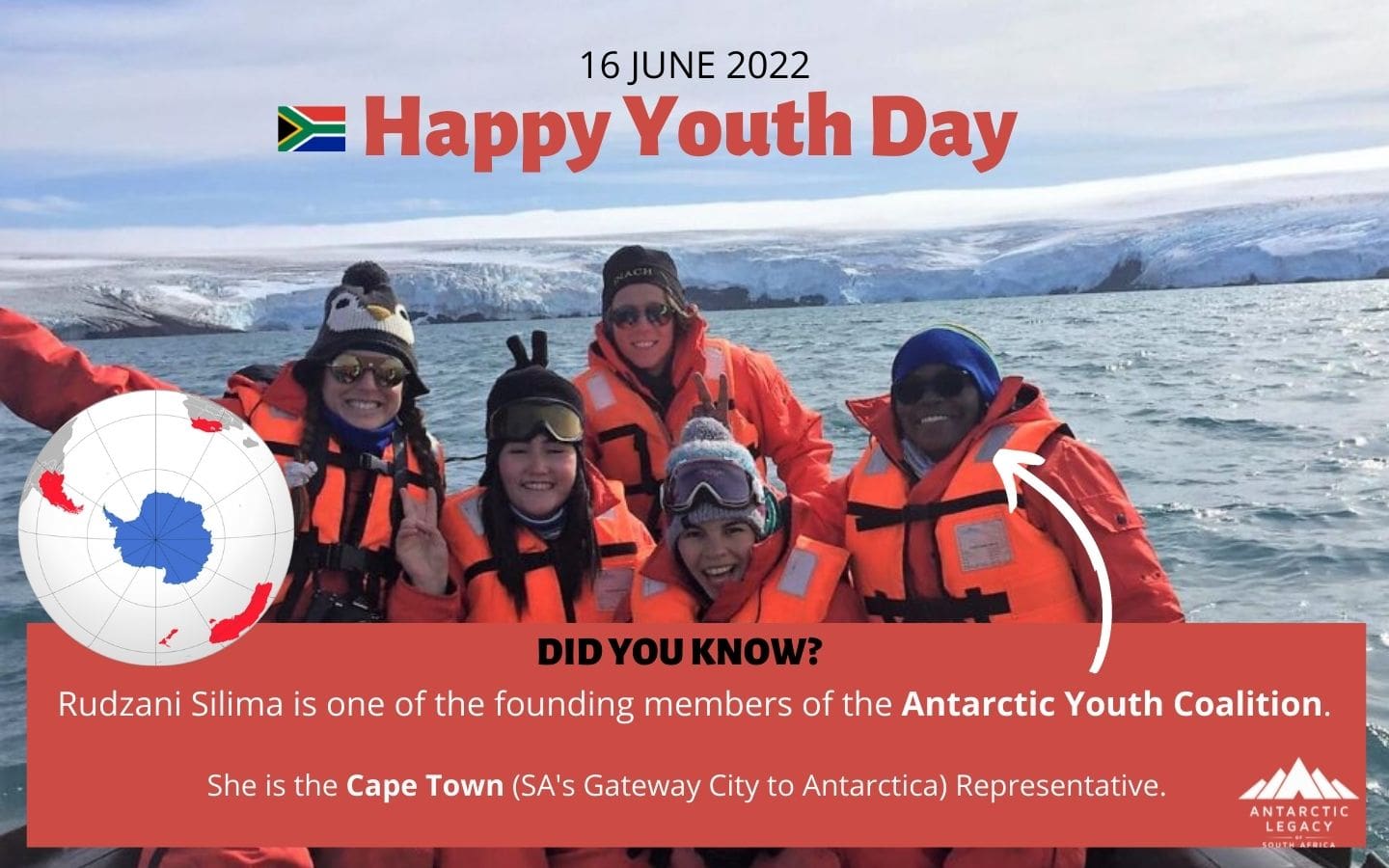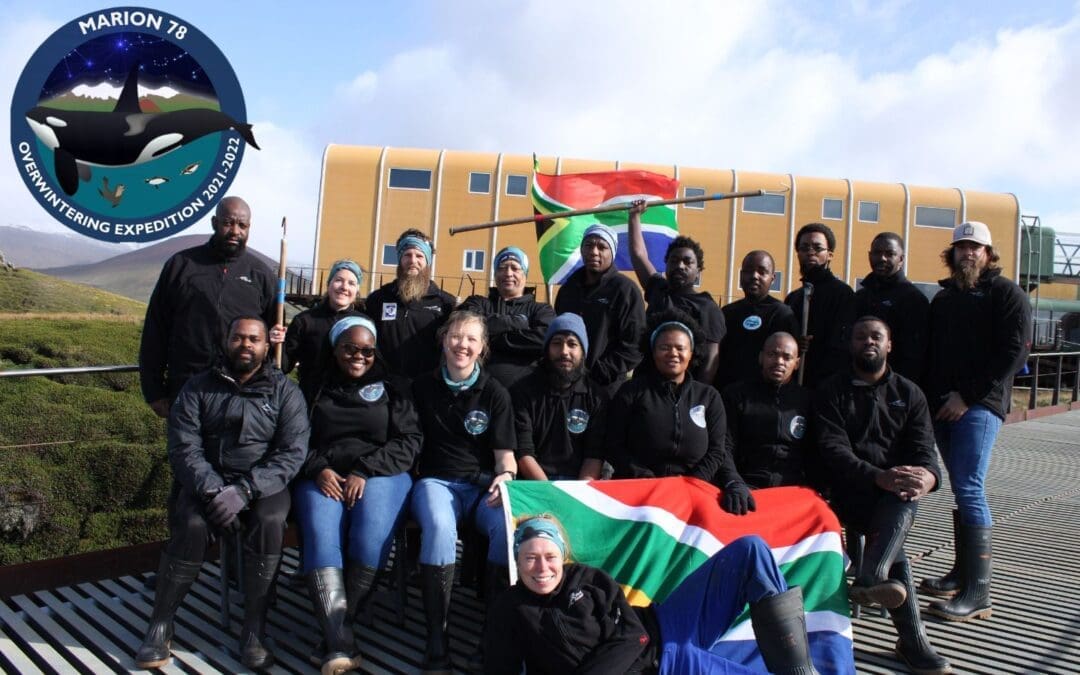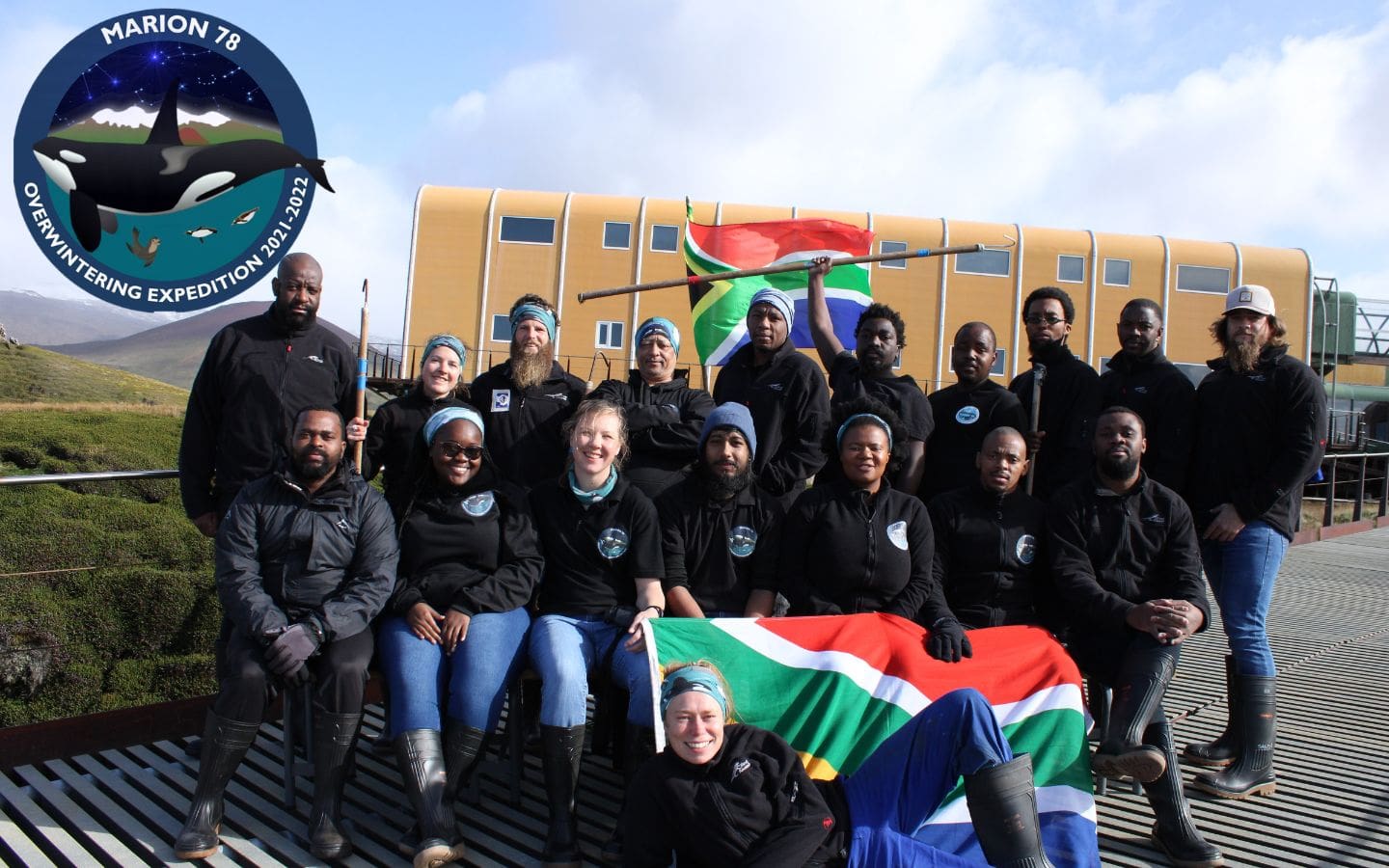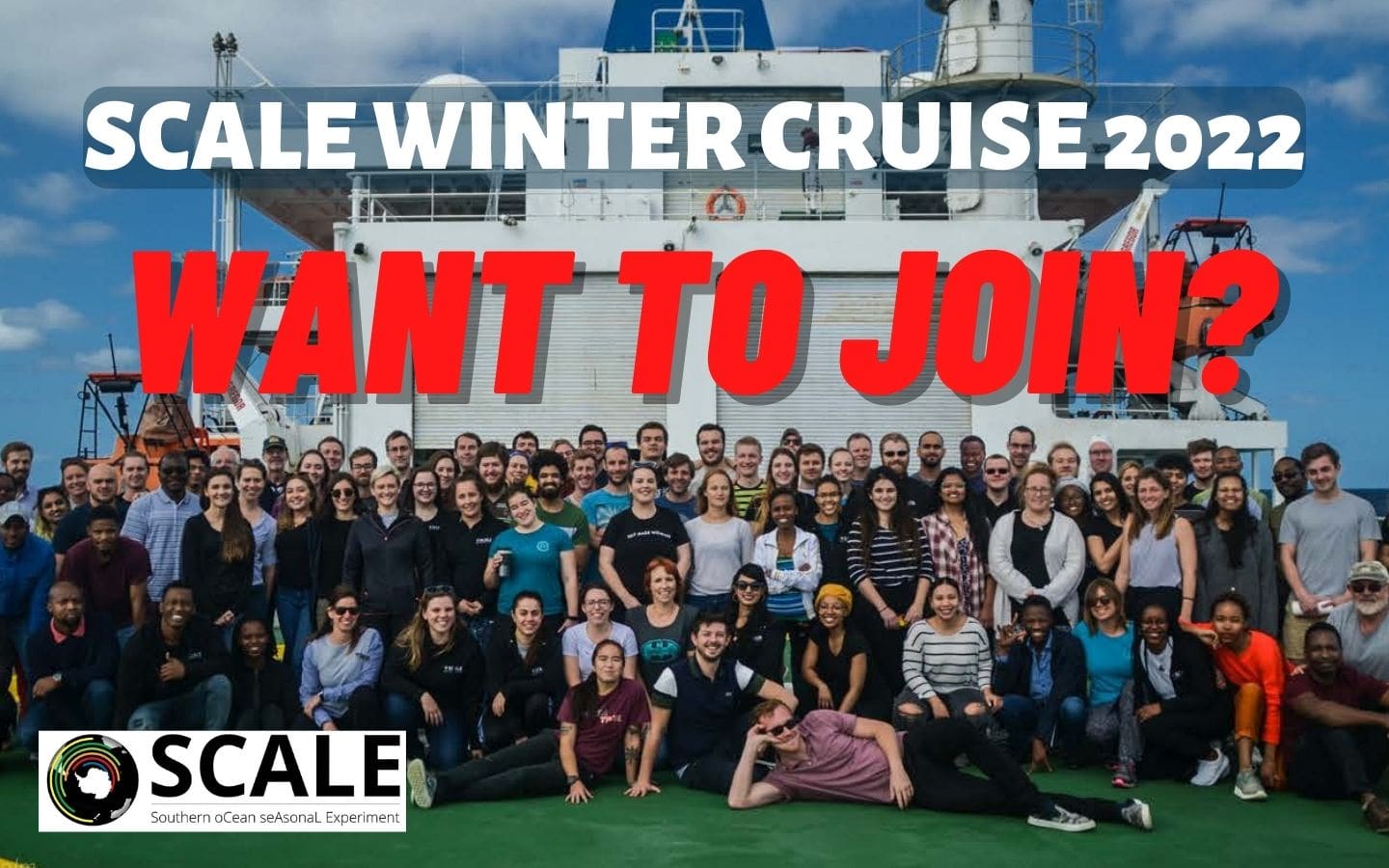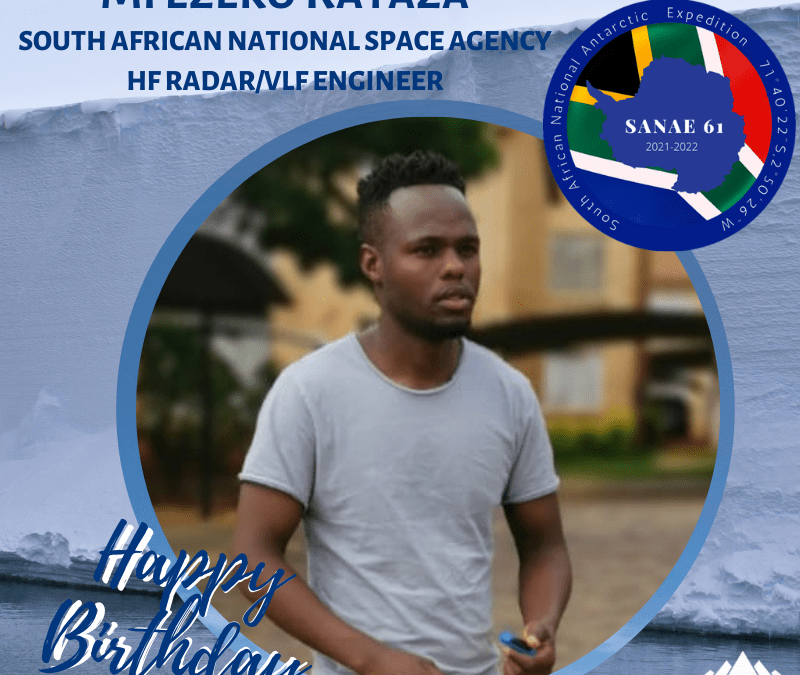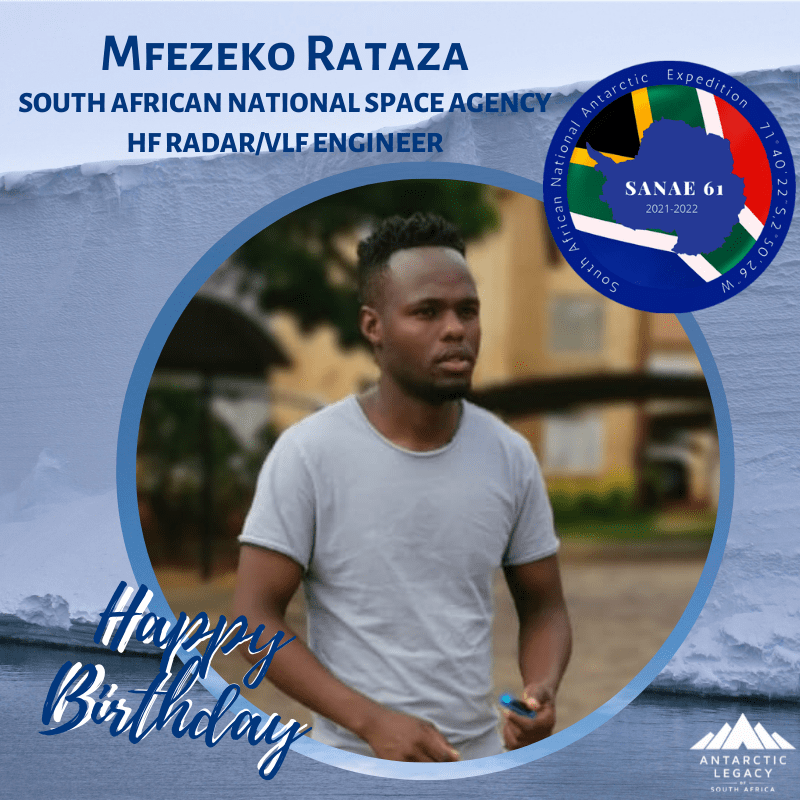
by Ria Olivier | Jun 25, 2022 | Announcement, Antarctica, Current Event, International Days, Legacy, Marion Island, SA Agulhas II, Southern Ocean
Day of the Seafarer, launched in 2011, is a day to pay tribute to all those working in the maritime industry. This year’s theme is ‘Your voyage – then and now, share your journey’.
Seafarers play a crucial role in the South African National Antarctic Programme.
I had the opportunity to come in contact with the newly promoted Chief Officer Subramoney, working for African Marine Solutions (AMSOL). AMSOL manages the South African polar research and supply vessel, the S.A. Agulhas II, and the Algoa research vessel.
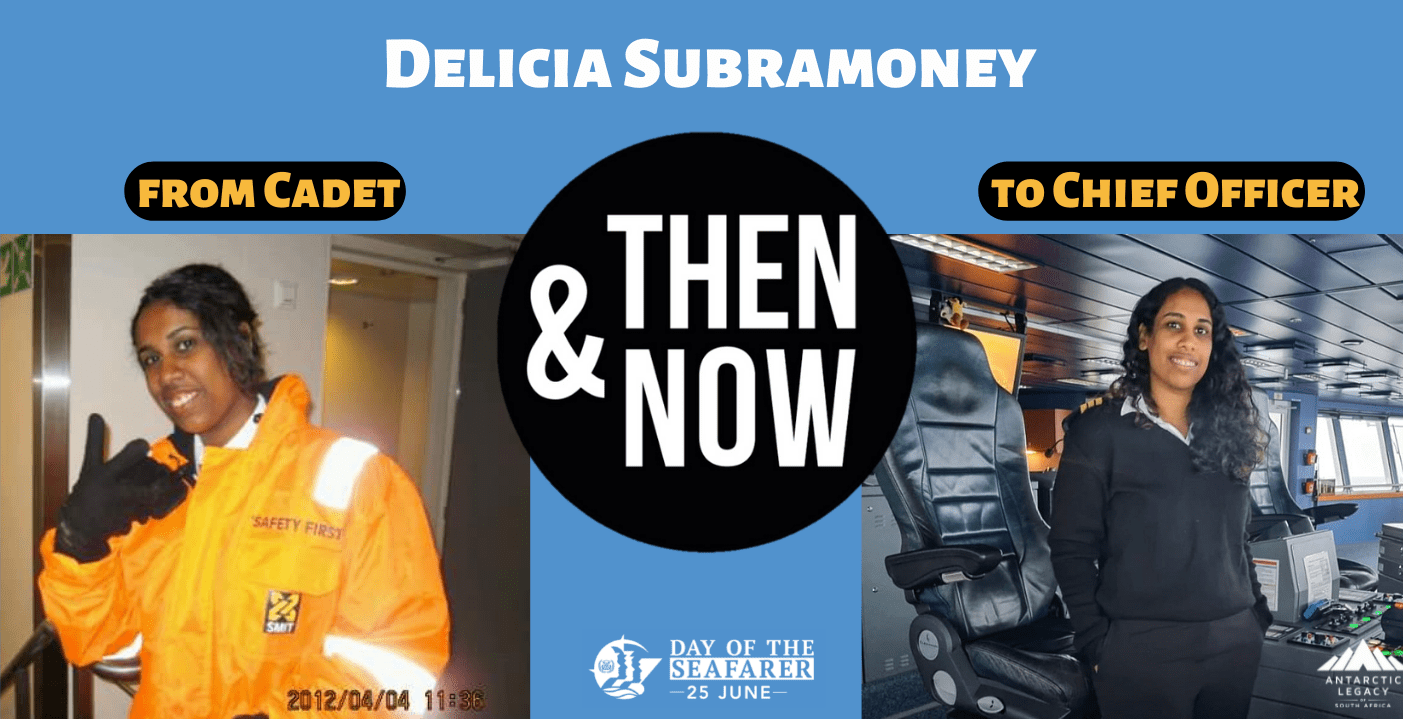
This is the journey of Chief Officer Delicia Subramoney
THEN and NOW – from cadet to Chief Officer
My journey started as a trainee (cadet) onboard the SA Agulhas II. I joined the vessel on its maiden voyage from Finland (click here, for images). I’ve fulfilled all navigational ranks onboard such as 3rd officer and 2nd officer, whilst working with AMSOL. And 10 years later, promoted to Chief Officer. It’s been a very challenging yet rewarding journey stepping onboard as Chief Officer and being a part of senior management after all these years.
Was becoming a seafarer always your dream?
Yes, I was introduced to the career and encouraged to apply for maritime studies at a very young age, due to my love for the sea and strong-willed characteristics. I began my maritime and seafarer career at the Durban University of Technology in 2011 and I’ve been at sea for 10 years.
Any special places you’ve visited while working onboard the S.A. Agulhas II?
South Georgia will always be my ultimate experience. I’ve never experienced a place more serene and beautiful.
Describe a typical day as Chief Officer onboard the S.A. Agulhas II?
The chief officer on board is responsible for safety and security, and managing the deck department and its operations. A typical day involves a lot of running around, safety discussions, organizing operations, and a ridiculous amount of coffee.
Being a seafarer can get really tough at times, what are the challenges of being a seafarer?
There’s honestly too much to mention. The maritime industry is faced with so many challenges, and at the same time quite neglected. It was especially difficult during the Covid-19 pandemic with an extended tour of duties, restrictions on shore leave, not being able to see your family, commercial pressure, and an overall stressful environment. I think the overall challenge for me is managing stress in such a demanding environment. Having a land-based job makes it a bit easier because you have access to family, friends, and other facilities that help you destress. However, being on a ship for long periods of time becomes an overwhelming cycle.
Some last words:
My journey at sea has shaped me into the person I am today. Being a seafarer exposes you to extreme conditions. It is very challenging but at the same time contributes to your personal growth. Being a woman at sea, I feel it is my responsibility to make the environment better for the next generation. I hope that all seafarers, especially women, that come into this career can leave their mark and contribute to a more equal and diverse system. Nothing on a ship is more important than a healthy working space and teamwork. It’s not just one person’s responsibility to run the ship, it’s the officers, crew, catering staff, engineers, cadets, etc – and I am thankful for all that I have worked with and continue to learn from!
To Chief Officer Delicia Subramoney and the rest of the crew onboard the S.A. Agulhas II
Thank you for pursuing this vital career in the marine industry. Thank you for ensuring the safety and comfort of all passengers boarding the vessel.
Check out the video below by the International Maritime Organization (IMO).
Anche Louw, Antarctic Legacy of South Africa, 25 June 2022.
Images: supplied by Delicia Subramoney

by Ria Olivier | Jun 19, 2022 | Announcement, Environment, Important Dates, International Days, Marion Island, Prince Edward Islands, Southern Ocean, sub-Antarctic
World Albatross Day was inaugurated by the Agreement on the Conservation of Albatrosses and Petrels (ACAP) in 2020 and is now celebrated annually on 19 June.

I have spent the past eight years in close contact with albatrosses, but have realised that many don’t really know of their existence and/or importance. World Albatross Day is a very important initiative to highlight the wonders of these special birds, as well as the threats they face on a daily basis.
Stefan Schoombie, a PhD in Biological Sciences at the University of Cape Town. His research focus is on the behaviour of seabird species.
How did you end up working on seabirds in the sub-Antarctic?
After finishing a BSc (Hons) at the University of KwaZulu-Natal in 2012, I had the opportunity to overwinter on Marion Island as part of the 70th overwintering expedition. During this expedition (2013-2014) I worked as a field assistant (for Fitzpatrick Institute of African Ornithology), monitoring seabird colonies, and gathering data for my Master’s degree.
I was fortunate enough to join several more expeditions to Marion Island between 2015 and 2019, this time gathering data towards my PhD degree, while performing other research activities with the ultimate goal of seabird conservation.
Read more about Stefan’s research and publications here!
How would you describe your first encounter with an albatross?
The first albatross I encountered was a Wandering Albatross, sitting on a nest on Marion Island. The sheer size of the bird was unbelievable, but the fact that they are so calm in our presence was incredible. Adult albatrosses breeding on sub-Antarctic Islands have no natural predators while on land, and thus they are not as scared of us as most land birds that we are used to. However, the most amazing thing about a Wandering Albatross is when they open their wings and reveal a three-meter wingspan.

Swartkops hut (on the Western side of Marion Island) and hundreds of Wandering Albatross nests.
The different Albatross species on Marion Island are each unique in their own way. How would you describe the uniqueness of each species?
 WANDERING ALBATROSS
WANDERING ALBATROSS
By far the most impressive of the albatrosses when you are up close. I tracked the fine-scale movements of these birds for my PhD degree, resulting in a lot of close encounters with them. We also monitored hundreds of breeding birds, as part of a long-term monitoring program. I was fortunate enough to spend enough time on Marion Island to see albatross chicks grow up from tiny chicks up to the point where they were large and strong enough to fly off into the vast Southern Ocean skies. Part of my research included the use of bird-borne cameras, where we were able to see what the birds experienced from their point of view, giving me a new-found respect for the incredible flying capabilities of these birds.
 SOOTY (OR DARK-MANTLED SOOTY) ALBATROSS
SOOTY (OR DARK-MANTLED SOOTY) ALBATROSS
These were the first albatross species I worked with, while gathering data for my MSc. Part of my research included setting up a long-term monitoring colony of Sooty Albatrosses. This included marking a large number of birds with unique numbered rings, for identification, which is particularly challenging seeing that these are cliff-nesting birds. One of the most memorable things about Sooty Albatrosses is their calls, which echo along the cliffs as they call to their partners. They also perform a synchronised flight as part of their courtship which is something to behold.
 LIGHT-MANTLED (OR LIGHT-MANTLED SOOTY) ALBATROSS
LIGHT-MANTLED (OR LIGHT-MANTLED SOOTY) ALBATROSS
These birds are very similar to the Sooty Albatross and I conducted the same research as with the Sooty Albatrosses. Light-mantled Albatrosses are more common in the southern parts of the Southern Ocean, with Marion Island being their northernmost breeding ground. Thus, their population size is quite small on Marion and the birds are a bit more skittish than other species.
 GREY-HEADED ALBATROSS
GREY-HEADED ALBATROSS
These are incredibly beautiful birds that are very photogenic, but their cliff-nesting behaviour makes them difficult to get close to. Apart from a small monitoring colony, we normally don’t come close to these birds and only perform annual counts with binoculars. However, in 2015 increases in attacks from invasive house mice resulted in us monitoring them much closer. Grey-headed Albatrosses breed in dense colonies which is like a very noisy, busy airport terminal, with birds landing and taking off all around you.

BLACK-BROWED ALBATROSS
Marion Island is not a breeding ground for Black-browed Albatrosses, but there is one vagrant individual that breeds with Grey-headed Albatrosses from time to time, resulting in hybrid offspring.
Seabirds of the sub-Antarctic are under threat due to unsustainable fishing practices, climate change, and invasive species. Currently, on Marion Island, the invasive house mice are threatening the albatross species living and breeding on this sub-Antarctic island. The Mouse-Free Marion Project (partnering with BirdLife South Africa and the South African Department of Forestry, Fisheries and the Environment) aims to remove the mice from Marion Island in 2024.
YOU CAN HELP SAVE MARION ISLAND’S SEABIRDS
View the ACAP Media Release for this Year’s Albatross Day
Anche Louw, Antarctic Legacy of South Africa, 19 June 2022.
Images: Stefan Schoombie.

by Ria Olivier | Jun 16, 2022 | Announcement, Antarctica, Environment, Gateway cities, Important Dates, News, Women in Science

Youth Day 2022 Theme: Promoting sustainable livelihoods and resilience of young people for a better tomorrow.
The call to action will be for youth to forge resilience and pursue opportunities for a sustainable livelihood, today and in the future (South African Government).

Rudzani Silima, a South African National Antarctic Programme (SANAP) graduate, is one of the founding members of the Antarctic Youth Coalition. She is a custodian for South Africa’s gateway city to Antarctica (Cape Town) and “advocating for Antarctica’s future, by promoting sustainable communities and connected urban identities” (AYC).
The five gateway cities to Antarctica:
- Cape Town (South Africa)
- Hobart (Australia)
- Christchurch (New Zealand)
- Punta Arenas (Chile)
- Ushuaia (Argentina)
Who is the Antarctic Youth Coalition?
How did Rudzani become one of the founding members?
Want to know more about Rudzi? Click here!
The Antarctic Youth Coalition is an initiative of the Project: Antarctic cities and the global commons: Rethinking the Gateways.
Read more about the Antarctic Cities Project
Anche Louw, Antarctic Legacy of South Africa, 16 June 2022.

by Ria Olivier | Jun 7, 2022 | Announcement, Marion Island, Overwintering Team, SANAP, sub-Antarctic, Team Photo
The 78th Marion Island Overwintering Team – Official Team Photo.

(L-R) Back: Rodney Phoko Matjomane (Diesel Mechanic), Danielle Conry (Field Assistant: Killer Whaler/Sealer), Frikkie van der Vyver (Field Assistant: Sealer), Charles Thomas (Base Engineer), Siwe Khoza (Radio Technician), Yinhla Shihlomule (Field Assistant: Sealer), Thando Cebekhulu (Field Assistant: O&C Seabirds), Zenande Kabase (Field Assistant: Geomorphology), Tlhoholofatso (Steve) Tebele (Assistant Meteorological Technician), DJ Van Wyk (SANSA Engineer and Science Team Leader); (middle) Sanele Mkhonza (Environmental Control Officer), Fanisa Phakula (Assistant Meteorological Technician), Isabel Micklem (Field Assistant: Seabirds), Nivek Ghazi (UKZN Astrophysics Engineer), Siyasanga Mpehle (Senior Meteorological Technician and Deputy Team Leader), Bubele Nongwejana (Medical Orderly and Team Leader), Sydney Tshilingalinga (Assistant Environmental Control Officer); (front) Eleanor Weideman (Field Assistant: Seabird Conservation).
The team departed from Cape Town, onboard the S.A. Agulhas II, on the 9th of April 2021. Three team members (Thando Cebekhulu, Yinhla Shihlomule, and Frikkie van der Vyver) of the 77th Marion overwintering team stayed behind, forming part of Marion 78. Read more here. Marion 78 arrived back in Cape Town on the 22nd of May 2022.
Click on the buttons below for more about Marion 78
Meet the Marion 78 team
M78 Team Logo
Season’s Greeting Card
Team news published on the SANAP website
Newsletters published by M78
M78 Team buff, badge and other apparel.
Team photo supplied by DJ Van Wyk (M78 SANSA Engineer and Science Team Leader).
Anche Louw, Antarctic Legacy of South Africa, 07 June 2021.

by Ria Olivier | Jun 3, 2022 | Announcement, Research, SA Agulhas II, SA Polar Research Infrastructure, SANAP, SAPolarRI, Science, Southern Ocean, STEM

The South African Polar Research Infrastructure has been recently established through funding from the Department of Science and Innovation (DSI). SAPRI is a consortium of institutions led by the South African Environmental Observation Network (SAEON) that enables scientific research in polar sciences. Among the various aims, it will promote and support participation in the South African National Antarctic Program (SANAP) by institutions that have not been historically involved in polar sciences.
As part of this transformation program, SAPRI will support the participation of 10 early career researchers to an upcoming research cruise on the S.A. Agulhas II departing on the 11th of July 2022. The scientific program will cover a variety of polar disciplines, from open ocean sampling to sea ice measurements. The projects are currently part of the SANAP and other NRF-funded projects with topics in the Southern Ocean and are led by internationally renowned scientists, with the participation of international teams.
The “SAPRI trainees” can be either early career researchers with an interest to grow their career in the polar sciences or more established researchers that would like to broaden their horizons. It is aimed at people who are early career (post-MSc) or established scientists and technicians who will remain in the system either through a Postdoc or being employed. They will participate in seminars on board the ship and will be exposed to the science done by the various projects, with direct hands-on experience through job shadowing and direct sampling. This is an opportunity to expand your current research topics and to build a network that would be helpful for your own projects. The group of SAPRI trainees will eventually become leaders of individual projects in their own universities.
This is a last-minute call specifically addressed to institutions and topics that have not been traditionally part of the SANAP. This includes aspects of social and economical sciences that are relevant to the polar sciences. As such, we require a prompt response from researchers and postgraduate students (MSc, MPhil, PhD). Participants will need a valid passport and be ready to go through a quarantine period of 7 days prior to departure.
Chief Scientist: A/Prof Marcello Vichi (MARiS)


KEY DATES:
8 June 2022: Applications Close
5 July 2022: Quarantine in dedicated hotel
11 July 2022: Departure at East Pier, Victoria and Alfred Waterfront, Cape Town Harbour.
31 July 2022: Arrival at East Pier, Victoria and Alfred Waterfront, Cape Town Harbour
COSTS: The SAPRI will cover the costs for transportation, quarantine stay and medicals. Ship costs will be covered by the NRF.
Expression of Interest: Click here!
To view the SCALE Crusie Report of 2019:
Click here!
DEADLINE: 08 June 2022

by Ria Olivier | Jun 1, 2022 | Announcement, Antarctica, Engineering, News, Newsletters>SANAE Newsletters, Overwintering Team, SANAE, SANAP, Stations, Team member

In this edition:
- Sunsets on Antarctica
- Birthday celebrations
- Get to know the team’s SANSA (South African National Space Agency) HF Radar/ VLF Engineer – Mfezeko Rataza, who celebrated his birthday on 16 April.
What do you find most challenging about being in Antarctica?
Mfezeko: “The job involve learning about climbing techniques and rope work, because we have to go up these 30 meters antenna to service them whenever there is a breakage sometimes in very cold conditions ( -15 degrees). Imagine trying to tighten a nut with your bear hands when frostbite start to occur after 2-3 minutes exposure”.
Want to read more? Click here to download the April 2022 issue.

Images from S61 April Newsletter. “Fez (Mfezeko) with his SANSA team by the Antennas”.

Birthday Card to Mfezeko Rataza (S61 SANSA Engineer) from Antarctic Legacy of South Africa – 16 April 2022.
Click here to view all the newsletters SANAE 61 has published to this date.
Anche Louw, Antarctic Legacy of South Africa, 01 June 2022
